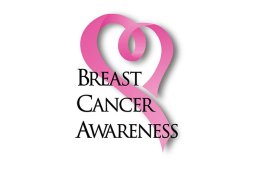Categories
- Bariatric Surgery (11)
- Black Fungus (5)
- Bone Marrow transplant (3)
- Brain Tumor Surgery Navigation Technology (20)
- Cardiac Surgery (66)
- Cardiology (97)
- Computer navigation technology for joint replacements (20)
- Covid Vaccination (17)
- Critical Care (2)
- Dental (19)
- Dermatology (31)
- Dialysis Support Group - “UTSAAH” (11)
- Dietitian (33)
- Emergency Medicine (4)
- Emotional Health (11)
- Endocrinology (33)
- ENT (20)
- Gastroenterology and GI Surgery (53)
- General and Laparoscopic Surgery (21)
- General Surgery (4)
- Gynecology & Obstetrics (183)
- Hematology (20)
- Internal Medicine (294)
- Kidney Transplant (50)
- Kidney Transplantation (20)
- Lung Cancer (8)
- Minimal Invasive Surgery (1)
- Mother & Child (20)
- mucormycosis (5)
- Nephrology (61)
- Neurology (147)
- Neurosurgery (68)
- Nutrition and Dietetics (107)
- Omicron Variant (1)
- Oncology (288)
- Ophthalmology (10)
- Orthopaedics & Joint Replacement (86)
- Paediatrics (59)
- Pediatric Nephrology (3)
- Physiotherapy (5)
- Plastic & Reconstructive Surgery (6)
- Psychiatry and Psychology (90)
- Psychologist (28)
- Pulmonology (72)
- Rheumatology (13)
- Spine Services (21)
- Transradial Angioplasty (16)
- Urology (84)
Query Form
Posted on Apr 19, 2022
Lump in the Breast - It may be Cancer
It must be understood before discussing about a lump in the breast that 80 % of breast lumps are not cancerous. Rest 20 % of the breast lumps may have malignant changes or abnormal findings. It is very important to know how to palpate the lump in the breast which may need further check up or, evaluation. It is always palpated with the pulp of the fingers and not by squeezing or any other methods, often called Breast Self Examination. Best time to examine lump in the breast is just after completion of menstrual period.
Any lump in the breast must be examined by Clinical expert or possibly by an Oncologist, this procedure is called clinical breast examination.

Risk Factors of Breast Cancer:
There are various risk factors of breast cancers. Among the risks of breast cancer one of the risk factor is age; its risk increases with age. However, it cannot be denied having breast cancer at younger age. Any lump in the breast increasing in size and shape, changing in consistency ( firm or, hard) or overlying skin changes warn the patients to undergo related investigations as on urgent basis.
A Check up is the Recommendation:
Invariably, clinical breast examination is recommended for any kind of lump found in the breast. The females who have positive family history, should follow the breast self examination and clinical breast examination (if necessary) on regular basis.
After Clinical Breast Examinations, patients may require to undergo different radiological investigations like ultrasonography of breasts ( for younger age and dense breasts) or Mammography (in adolescents or elderly ladies) and pathological investigation, if required.
Most common pathological procedure being done is FNAC from the breast Lump which is very much contributory. If clinical features are quite suggestive of malignancy, an oncologist may ask for tissue biopsy directly from the lump in stead of FNAC to make the diagnosis along with hormone receptor status in same tissue. These investigations guide the oncologist not only to understand the tumour biology and its aggressiveness to some extent and help also in making the final treatment plan. Treatment plan varies from patient to patient after getting final histo-pathological diagnosis and metastatic work up.
Sometimes, Benign breast lumps or diseases can be diagnosed straightaway on the basis of clinical examination only e.g Fibroadenoma of breasts . However, it is always recommended to confirm the diagnosis by other means too.



